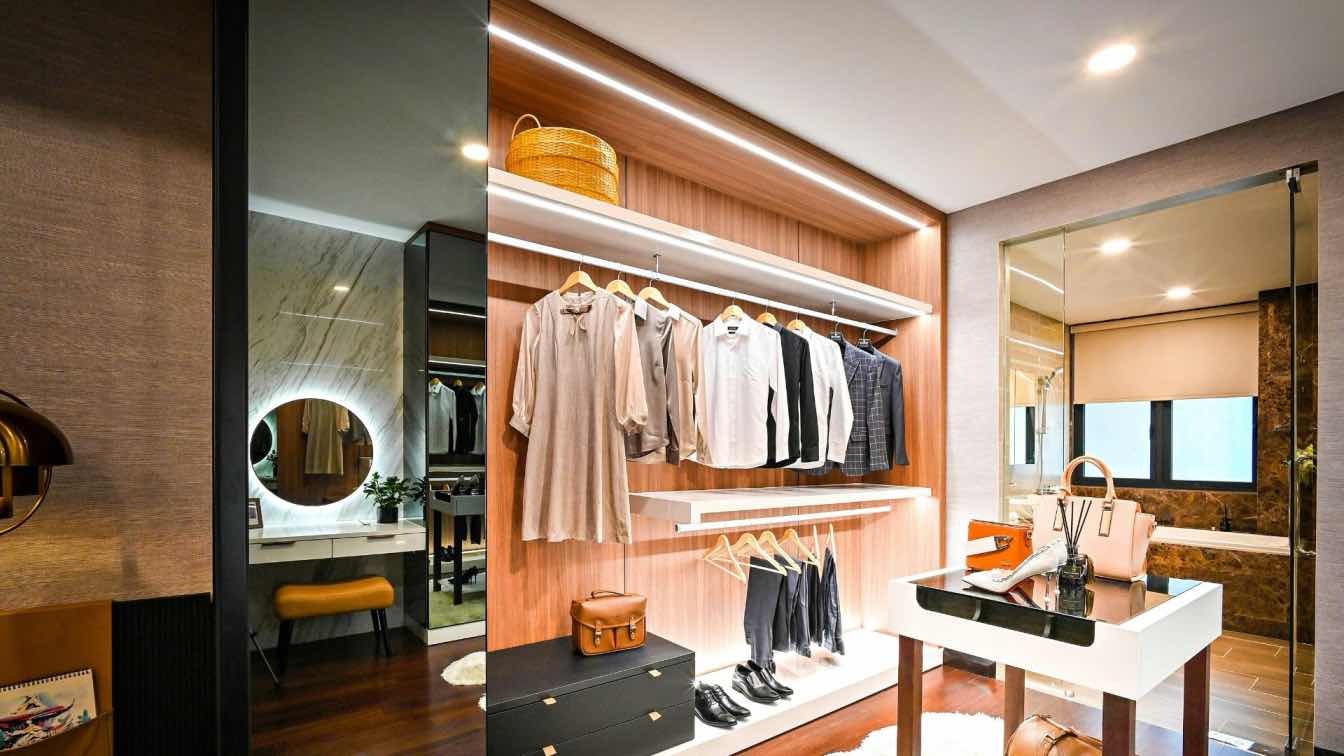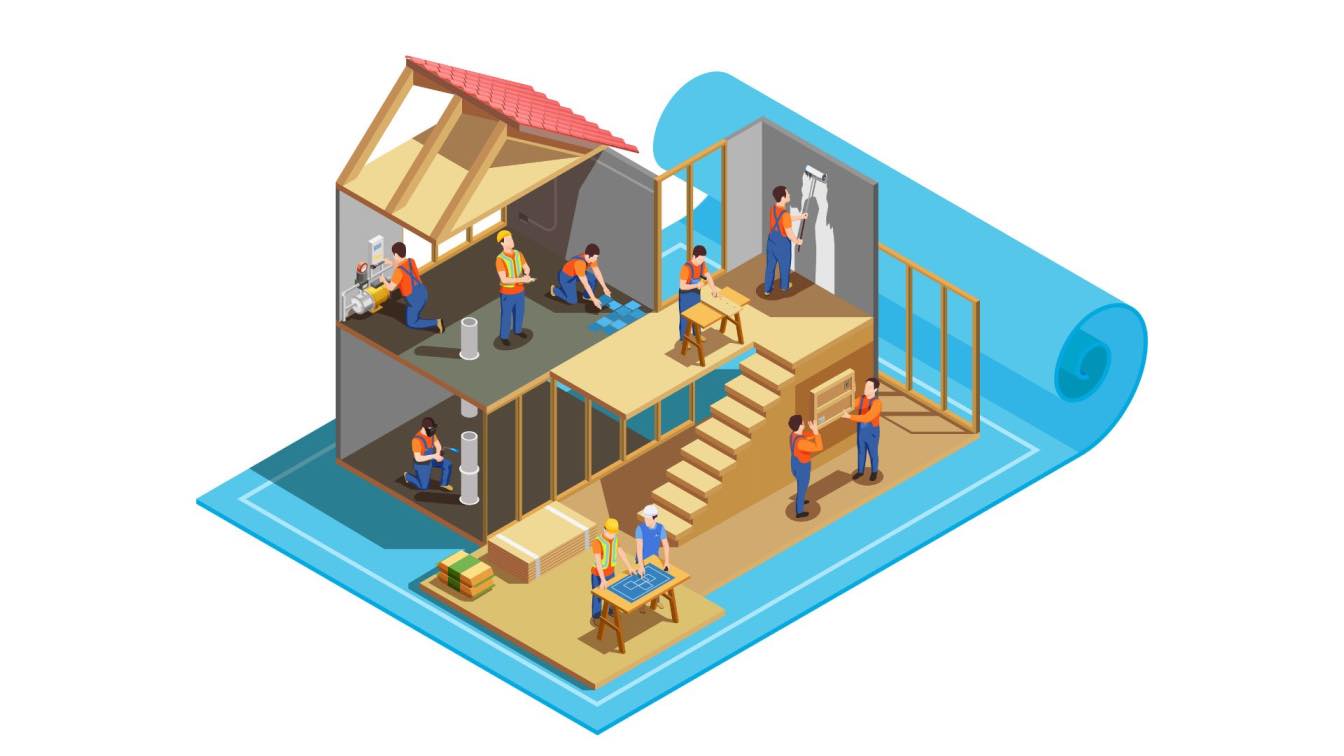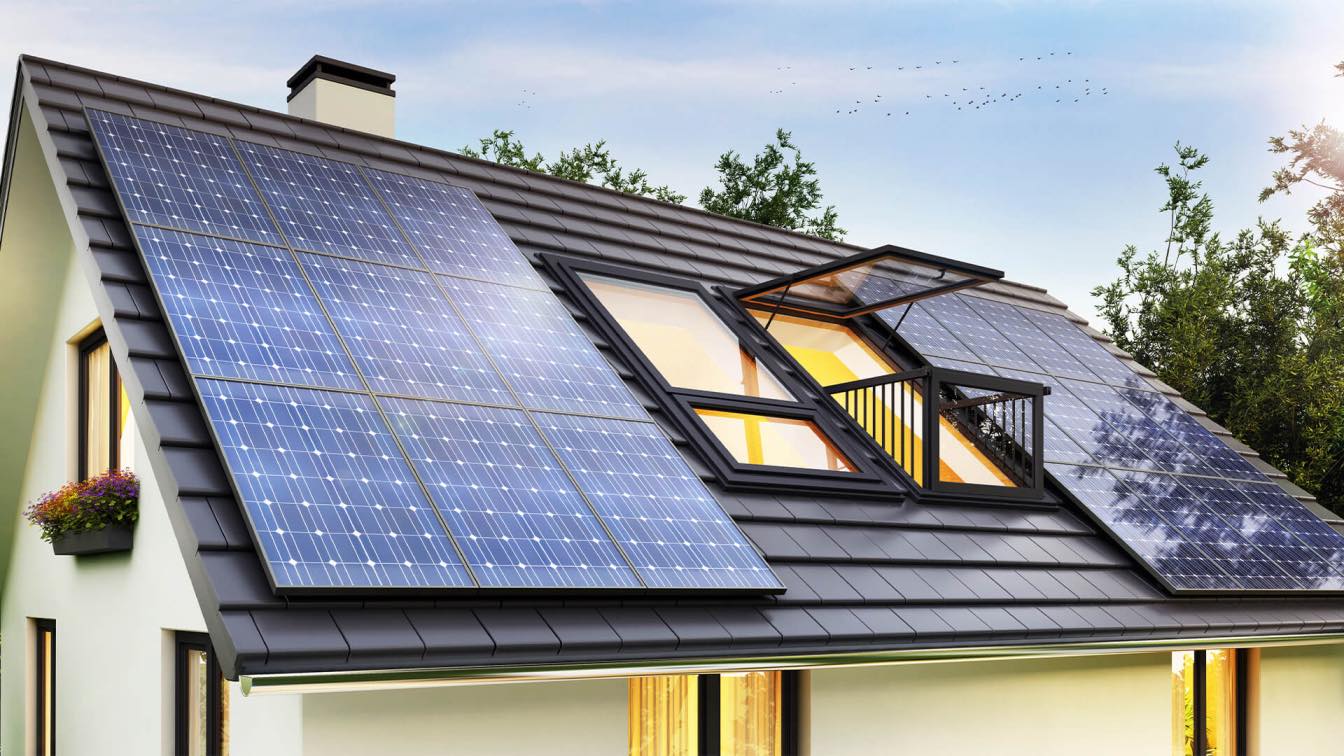Sustainable home improvements are more important now than ever. As we become more conscious of the environmental impact of our decisions, many are seeking ways to lessen their carbon footprint and create greener living spaces. One area where many people do not often think about sustainability is their wardrobe, but there are many eco-friendly options that can help you create a sustainable and eco-conscious wardrobe.
The Importance of Sustainable Home Improvements
Sustainable home improvements are important for several reasons. From an environmental standpoint, they reduce our impact on the planet. By choosing materials and practices with intention we can help to limit the depletion of natural resources, reduce waste and reduce harmful emissions — all of which help to preserve our environment for future generations and mitigate the effects of climate change.
They’re also important for improving health and well-being. Many traditional construction materials and finishes contain high levels of volatile organic compounds out-gas and can have a significantly negative impact on indoor air quality. By choosing to use zero or low-VOC materials, we can create healthier living environments for ourselves and our families.
Eco-Friendly Wardrobe Solutions
When we think of sustainable living, wardrobe design is not necessarily the first thing to come to mind. However, it is one area of the home where we can and should make a big impact. By using eco-friendly materials, energy-efficient lighting, and smart organizational solutions, we can create a wardrobe that not only helps to reduce our environmental footprint, but also enhances our daily living experience.
Benefits of Sustainable Wardrobes
There are numerous benefits to investing in sustainable wardrobes. For starters, they contribute to conservation efforts by reducing the demand for new materials and minimizing waste generation. For example, if you use reclaimed wood or bamboo for your wardrobe construction, you’ll be making good use of existing materials that might otherwise have ended up in a landfill. Sustainable wardrobes are also usually made from materials with low Volatile Organic Compounds (VOC) emissions, which helps to improve indoor air quality and create a healthier living environment.
Furthermore, sustainable wardrobes offer aesthetic benefits, too. The distinct grains and textures of reclaimed wood, or the clean, modern look of bamboo, can add character and style to your space. So, by using sustainable materials, you can create a wardrobe that’s as unique and custom as your one-of-a-kind wardrobe that reflects your commitment to a greener lifestyle.
It is important to be mindful of the environmental impact of your wardrobe materials. Traditional materials for wardrobe construction—such as particleboard and medium-density fiberboard (MDF)—often contain harmful chemicals, such as formaldehyde. These chemicals can off-gas over time, which can lead to poor indoor air quality and potential health risks. There are many sustainable alternatives to consider, however. Reclaimed wood is increasingly popular among eco-conscious consumers. With its weathered appearance, reclaimed wood brings unique character and can be sourced from old buildings or discarded furniture. In addition to reclaimed wood, bamboo is an excellent alternative to consider as it is a rapidly renewable resource. It replenishes at a much faster rate than traditional hardwoods.
Benefits of Materials with Low VOC Emissions
There are multiple benefits to using materials with low VOC emissions. By choosing low VOC paints or finishes, you reduce off-gassing, which creates a healthier living environment. They contain lower levels of harmful chemicals (if any), which cannot only contribute to improved indoor air quality, but also avoid unnecessary headaches and respiratory issues.
Energy-Efficient Lighting for Wardrobes
Lighting is a critical component of any wardrobe design. By choosing energy-efficient lighting methods, we can reduce the amount of energy we consume while keeping our carbon footprints small.
Importance of Energy-Efficient Lighting
Energy-efficient lighting is critical for sustainable wardrobe designs in a couple of ways: For starters, traditional incandescent bulbs kick out quite a bit of heat. Are you really going to stand in front of a floor-to-ceiling mirror as you try on outfit after outfit? Energy-efficient lighting will make sure that temperature doesn’t become untenable. Secondly, those incandescent bulbs use more electricity than is necessary. Whether we adored the designs or feared the man, we all know Calvin & Hobbes was onto something “greener” decades ago. Potential choices include:
Different Types of Eco-Friendly Lighting Options
LED (light-emitting diode) bulbs:
Because they use significantly less energy and last longer than incandescent bulbs, LED bulbs are a top contender in the energy-efficient lighting game. They’re also available in a variety of colors and intensities, so they can provide for a number of different wardrobe lighting needs.
Energy Saving Lighting
For those who love to read or work in the wardrobe space, another spectacular way to conserve energy and have the area illuminated is through the use of energy-saving lighting. Besides, LED lights or lighting as shown in this picture do not only reduce your utility bill, they are also much safer than incandescent light, with a much longer lifespan. Whatever option you choose, also remember to make sure that you dispose of it when it is no longer useful, since it uses very little Mercury.
Maximizing Natural Light
A mix of background lights and sconces with the right window design and placement ensures that you will never have to turn to full-fledged light for anything; since all parts of the wardrobe lit by these will be easily bathed in natural light. With design and visual aesthetics taken into account as well, the wardrobe that you design could also serve as a lovely dressing room!
Optimal Use of Space: Wardrobe Organization and Storage Solutions
Proper storage solutions and organization are CRUCIAL for maximizing space and minimizing waste.
Appropriate Fitted Wardrobe Doors
As you continue to create a sustainable wardrobe, it is important for the appropriate fitted wardrobe doors to take the lead. Opt for high-quality doors that are crafted with sustainable materials. Reclaimed wood and bamboo are a few wonderful materials that will help ensure that you are working toward a greener way of life. Available in an array of finishes, such as tobacco and antique mahogany, these materials aid in adding visual interest and one-of-a-kind panache to the space.
Finally, let your closets keep the secrets behind what you wear and how you fold it. This chic little number is not only a mirror view of your fabulous self, but all of your clothes are equally stylish as they will be behind its doors.
Eco-Friendly Storage Solutions
Sustainability can be further imbued into your wardrobe through eco-friendly storage solutions. Adjustable shelves and modular systems allow flexibility and adaptability as your storage needs evolve over time, reducing the need for extra wardrobes or storage units and minimizing waste and resource consumption.
Tips for Decluttering and Minimizing Excess Wardrobe Space
The process of decluttering and minimizing excess wardrobe space is another practical way to enhance the sustainability of your clothing. Thoroughly assess and organize your belongings to determine what is truly essential and what can be donated or repurposed—doing so minimizes the likelihood of requiring excessive wardrobe space to begin with, and therefore, curbs unnecessary consumption.
Green Alternatives for Wardrobe Doors
Wardrobe doors create a polished look, but also represent the ideal opportunity to opt for sustainable materials.
Environmental Impact of Different Wardrobe Door Materials
As far as wardrobe doors are considered, it’s important to be aware of the environmental impact of different materials. Traditional choices like solid wood or MDF tend to be associated with high-energy production processes and sometimes deforestation.
Despite the many cabinet door materials, a homeowner can also consider other sustainable alternatives for wardrobe doors. For example, reclaimed wood doors are made from salvaged wood, which in turn, reduces the demand for new materials and prevents waste. These doors also have a unique and characterful look, which adds a touch of sustainability to your wardrobe design. Recycled glass doors are a great eco-friendly choice because they repurpose glass waste into a beautiful and eco-friendly design element.
Tips for Choosing Eco-Friendly Door Hardware and HandlesIn addition to door materials, there are also tips for choosing eco-friendly door hardware and handles. For example, a homeowner might consider products made from sustainable materials, such as recycled metal, or alternatives made from natural materials, such as bamboo or cork. By selecting eco-friendly door hardware, it's possible to ensure a cohesive and sustainable wardrobe design.
Eco-Friendly Finishes and Paints for Wardrobe Surfaces
The finishes and paints used on wardrobe surfaces have a major impact on indoor air quality and sustainability.
Traditional finishes and paints contain harmful chemicals including volatile organic compounds (VOCs) that are off-gas, leading to exposure to poor indoor air quality, which can be hazardous to your health. Selecting eco-friendly alternatives can help to mitigate these effects.
Eco-Friendly Options for Finishes and Paints
Luckily, there are several eco-friendly alternatives for finishes and paints. For finishes, select options such as natural oils and waxes, both of which are non-toxic and low VOC alternatives to traditional finishes—instead they protect and enhance the wood without altering its appearance or emitting dangerous fumes.
As far as paint is concerned, opt for water-based paints which have lower VOC emissions than do oil-based paints—water-based paints also produce far less toxic waste than oil-based paints do through the painting process, and they are widely available in low or zero VOC options which are a much healthier and sustainable option for the surfaces of your wardrobe.
Maintenance and Care of Eco-Friendly Wardrobes
Proper maintenance and care of your eco-friendly wardrobes is essential to ensure their continued sustainability and longevity.
Eco-Friendly Wardrobes: Features, Benefits, Maintenance and Care Tips
Features and Benefits of Eco-Friendly Wardrobes
When selecting eco-friendly wardrobes, look for features that help minimize environmental impact and provide a safe, healthy home environment. Eco-friendly wardrobes are typically constructed from sustainable materials, such as engineered wood, bamboo, and reclaimed wood. They are also free from toxic chemicals and finishes, such as formaldehyde, VOCs, and lead paint.
While eco-friendly wardrobes are durable and designed to withstand normal wear and tear, they require regular maintenance and care to keep them looking and functioning their best.
Tips for Proper Maintenance and Care
Cleaning and maintaining eco-friendly wardrobes is simple and straightforward. Avoid using harsh chemicals that can damage the surfaces and negatively impact indoor air quality. Instead, use eco-friendly cleaning products that are free from harmful toxins and safe for both you and the environment.
Inspect the wardrobes on a regular basis for signs of wear and tear. Promptly repair or replace any damaged or malfunctioning components to prevent further damage and maintain optimal functionality.
Why Regular Cleaning and Proper Ventilation Is Important
Regular cleaning is the key to keeping your eco-friendly wardrobes clean and well-maintained. Dust and debris can accumulate on surfaces and in corners, affecting the overall appearance and performance of the wardrobes. To keep your wardrobes clean and dust-free, periodically wipe down all surfaces with a damp cloth and/or eco-friendly cleaner.
Excess moisture is also harmful to your eco-friendly wardrobes. Proper ventilation helps prevent moisture build-up that can cause mold and mildew to prevent growth. Open windows and/or use a fan to ensure air circulates in your wardrobe space, especially in areas susceptible to high humidity.
Conclusion
Creating a sustainable wardrobe is an important part of creating a sustainable home. Greening up your wardrobe by choosing eco-friendly materials, energy-efficient lighting and smart organizational solutions will help reduce your environmental impact while improving the function and form of your wardrobe space. Sustainable wardrobes offer many benefits such as reduced waste, better indoor air quality and an overall healthier living environment for your family and you.
Investing in sustainable wardrobe solutions not only helps create a greener world, but also showcases your commitment to environmental responsibility. By integrating eco-friendly practices and materials into your wardrobe, you will be able to reduce your little corner of the earth’s impact on the planet — while creating a more sustainable living space for generations to come.





